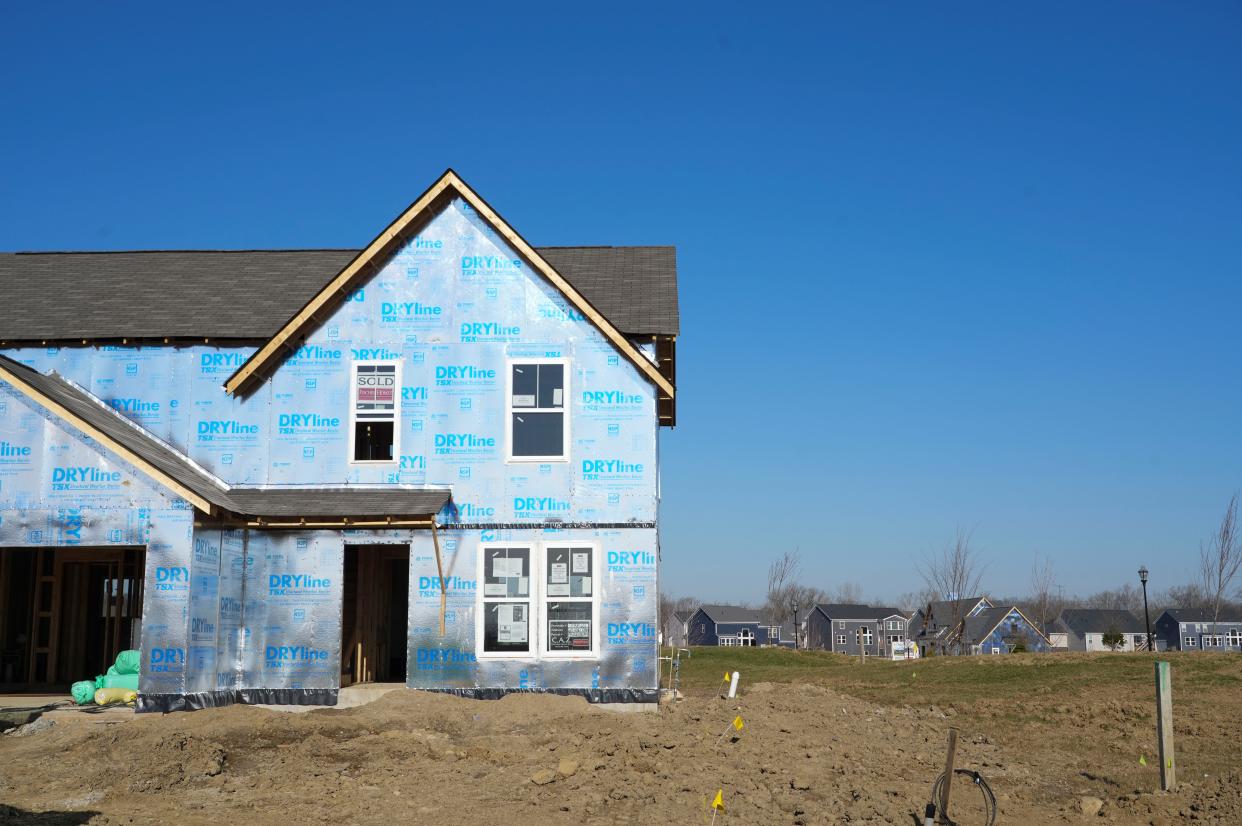Columbus-area home construction hits 17-year high, but housing shortage deepens

More homes were built last year in the Columbus area than in any year since 2005, but the region's housing shortage worsened because of a drop in apartment construction.
Columbus-area builders started 6,160 single-family homes in 2021, up 17% from the previous year and the most in 17 years, according to figures released by the Building Industry Association of Central Ohio.
Apartment construction, however, fell 29% from 6,620 units in 2020 to 4,699 last year.
In all, 10,859 housing permits were issued in 2021 in central Ohio, down nearly 8.5% from the previous year and well below the number of new homes experts say the area needs to meet demand.
"Obviously, we're pleased to see single-family home starts increase," said BIA Executive Director Jon Melchi.
But, he added, "we need 14,000 units per year in the region and that's reflected in housing costs and rising rents. There's just not enough housing out there to meet demand."
A 2018 study commissioned by the BIA concluded that the region needed to build 14,000 to 21,000 new homes each year to meet demand. Instead, about 10,000 homes and apartments were added each of the past four years.
“It’s not an understatement to say that housing is a major crisis for central Ohio,” Mid-Ohio Regional Planning Commission Executive Director William Murdock said Wednesday before the organization's state-of-the-region presentation.
The inability of builders to meet demand has contributed to record-high prices for both apartments and homes.
The median sales price of a Columbus-area home last year was $260,000, nearly $100,000 more than it was five years earlier, according to the Columbus Realtors trade group. The median monthly rent of a Columbus-area apartment was $1,145 in February, up about $100 from a year ago, according to the rental site Dwellsy.
Rising prices have especially hurt low-income renters, who have an increasingly difficult time finding apartments they can afford. An estimated 54,000 households in Franklin County spend more than half of their incomes on housing, according to the Affordable Housing Alliance of Central Ohio.
The problem is so severe that Columbus Mayor Andrew Ginther this week proposed a $150 million bond issue to fund affordable housing.
Melchi said several issues hinder builders' abilities to catch up with demand.
"It's an accumulation of things. From a macro level, certainly supply chain challenges have restricted some construction and delayed projects and increased the cost of projects," he said.
"More broadly and more of an impact here is the challenges the development community has in getting approval for local projects and finding land that has infrastructure."

Demand is so strong for new homes across the board that many builders have limited sales for fear of being unable to keep up with buyers.
"We're managing sales unlike we've ever had to do in the past just to make sure we're not selling beyond our capacity," said Jon Jasper, president of Fischer Homes' Columbus division.
"Because the demand is across all price points and product lines, we start each month with a quota, two or three sales per community and when we get there, we pause and evaluate."
Fischer Homes' Columbus-area sales rose 34% last year from the previous year and would have risen more if the builder could have kept up with demand, Jasper said.
"The biggest obstacle currently is an individual municipality's willingness to support housing growth, particularly diversified housing growth," he said. "It's density and lot size."
The issue is especially acute with apartments, which regularly meet neighborhood opposition.
A September report by the Mid-Ohio Regional Planning Commission outlined opposition to affordable housing including neighborhoods' resistance to new development or changes to local housing laws.
The MORPC report recommended easing barriers to development, providing direct assistance to low-income home buyers, and encouraging the construction of affordable housing near public transit.
Melchi noted that fast-growing metro areas of similar size are building far more homes than Columbus. More than 45,000 new homes and apartments were built in Austin, Texas, last year, four times the number built in the Columbus area.
In Nashville, Tennessee, and Charlotte, North Carolina, more than twice as many homes were built than in Columbus. Closer to home, Indianapolis added slightly more homes than Columbus while Cincinnati added fewer.
Melchi and others see no sign that demand will diminish any time soon.
"We'll continue to see demand because we've so underbuilt this region for so long, and it doesn't appear to me that the growth is going to slow down. Make no mistake, that's a good thing, but we're going to need an approach that reflects that growth."
Columbus Dispatch reporter Patrick Cooley contributed to this report.
jweiker@dispatch.com
@JimWeiker
This article originally appeared on The Columbus Dispatch: Columbus home construction rises, but housing shortage deepens

